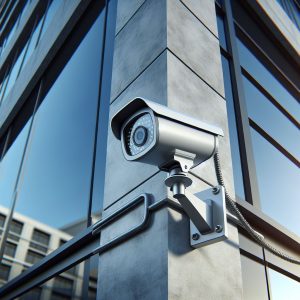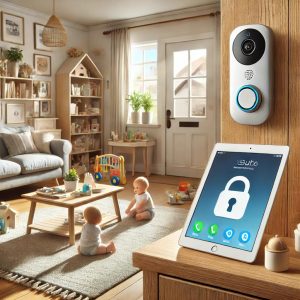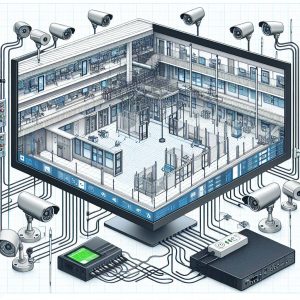Home security is more accessible than ever thanks to the rise of DIY systems that allow homeowners to set up protection on their own terms, without professional installation. DIY systems provide flexibility, cost savings, and ease of use, making them an attractive choice for those who want effective home security without the expense of traditional systems. However, DIY setups may not suit everyone, especially if you have a larger property or more complex security needs. This article explores the pros and cons of DIY home security, the types of systems available, and how to decide if a DIY setup is the right choice for you.
What is a DIY Home Security System?
A DIY home security system is a self-installed solution that typically includes cameras, sensors, alarms, and sometimes smart home features. Unlike traditional setups requiring professional installation, DIY kits come with step-by-step instructions and app-based management, allowing you to install and monitor the system yourself. These systems are designed to be user-friendly and often connect via Wi-Fi, giving you the flexibility to set up and adjust security features as needed.
Types of DIY Systems Available:
- Starter Kits: Basic kits with essential components, like door and window sensors and a central hub, offer foundational security at an affordable price.
- Smart Systems: These come with advanced features like remote access, smartphone alerts, and integration with other smart home devices, allowing for greater control and connectivity.
- Hybrid DIY Systems: Hybrid systems allow for self-installation with the option for professional monitoring, offering a combination of flexibility and added security.
Advantages of a DIY Home Security System
DIY security systems have several benefits, especially for those who value flexibility and affordability.
- Lower Costs: With no installation fees and a range of affordable options, DIY systems tend to be budget-friendly. Many DIY setups also offer no-contract monitoring, which can further reduce monthly expenses.
- Flexible and Customizable: DIY systems let you choose only the components you need. You can start with a basic kit and expand the system as your security needs change, making DIY solutions ideal for renters or those with smaller homes.
- Easy Installation: Most DIY systems are designed for quick, straightforward setup, often taking less than an hour. Components are usually wireless and require minimal tools, making it easy to install without drilling or professional help.
- Portability: Because DIY systems are simple to uninstall, you can take them with you if you move, which is convenient for renters or people who frequently relocate.
When DIY Works Best:
- Small homes, apartments, or rental properties.
- Budget-conscious homeowners looking for a flexible solution.
- Those who prefer self-monitoring over professional services.
Limitations of a DIY Home Security System
While DIY systems offer convenience and savings, they may not meet everyone’s needs.
- Limited Coverage for Large Properties: DIY systems may not provide the extensive coverage needed for large homes or properties with multiple buildings. In these cases, a professionally installed system with a wider range of cameras, sensors, and advanced configurations may be a better option.
- Self-Monitoring Requirements: Many DIY systems rely on self-monitoring, meaning it’s up to you to respond to alerts. If you’re unavailable during an emergency, authorities may not be notified. Some DIY systems do offer optional professional monitoring, but this often comes with additional monthly fees.
- Potential Setup Challenges: Although designed for easy installation, some users may find setup challenging, particularly when placing outdoor cameras or connecting the system with other smart home devices.
- Limited Advanced Features: Basic DIY systems may lack features like environmental monitoring (for smoke or carbon monoxide), facial recognition, or comprehensive smart home integration. Users with more sophisticated security requirements may find these limitations restrictive.
When DIY May Not Be Ideal:
- Large homes or properties needing comprehensive monitoring.
- Homeowners who prefer a “hands-off” approach to security.
- Individuals who need 24/7 professional monitoring for extra peace of mind.
Popular Features of DIY Home Security Systems
DIY systems often include a range of customizable features, allowing you to select components that match your needs. Here are some popular options commonly found in DIY security systems:
- Cameras with Motion Detection: Many DIY systems include cameras equipped with motion detection, night vision, and sometimes two-way audio. Some also offer AI-based facial recognition to reduce false alerts.
- Smartphone Alerts and Remote Access: Most DIY systems connect to a smartphone app, allowing you to receive alerts, view live camera feeds, and control the system remotely. This is especially useful for those who travel frequently or want to monitor their home from work.
- Environmental Sensors: Some DIY systems offer add-ons like smoke, carbon monoxide, and water leak detectors. While not always included in the basic kit, these sensors can be added for an extra layer of safety.
- Smart Home Integration: Many DIY systems are compatible with smart home devices like Amazon Alexa, Google Assistant, and Apple HomeKit. Integration with voice assistants enables voice control and automation, such as arming the system when you lock the front door.
Choosing Key Features Based on Your Needs:
- Basic Security Needs: Entry sensors, motion detection, and basic alarms.
- Expanded Security: Indoor/outdoor cameras, smartphone alerts, and environmental sensors.
- Full Integration: Smart home compatibility, voice assistant integration, and automation options.
DIY vs. Professional Monitoring: What’s the Difference?
With DIY systems, you’ll need to decide between self-monitoring and professional monitoring. Here’s a breakdown of each option:
- Self-Monitoring: With self-monitoring, you’re responsible for checking alerts and responding to security breaches. This option is free, as it doesn’t involve monthly fees, but it requires you to be available to handle alerts. Many DIY users opt for self-monitoring to avoid monthly expenses.
- Professional Monitoring: Some DIY systems offer professional monitoring as an optional service. Professional monitoring connects your system to a monitoring center that can alert emergency responders if an alarm is triggered. This option offers peace of mind but typically requires a monthly subscription fee.
Factors to Consider:
- Cost: Professional monitoring adds a monthly expense, while self-monitoring is free.
- Availability: If you’re often unavailable to respond to alerts, professional monitoring may be worth the extra cost.
- Control: Self-monitoring provides direct control, while professional monitoring offers backup when you’re unable to respond.
Cost Comparison: DIY vs. Professional Systems
DIY systems are generally more affordable than professionally installed systems, both in upfront and ongoing expenses.
- Initial Costs: DIY systems typically cost between $100 and $500, depending on components, while professional systems can cost upwards of $1,000, especially for complex installations.
- Installation Fees: DIY systems have no installation fees, whereas professional systems may require an installation charge, which can range from $100 to $500.
- Monthly Fees: Self-monitored DIY systems usually have no monthly fees, while professionally monitored systems typically charge $20 to $50 per month.
Calculating the Savings: For those looking to save, DIY systems can offer significant financial advantages. However, consider the costs of adding extra components, such as cameras or environmental sensors, to achieve your desired level of security.
Best DIY Security Systems for Different Needs
DIY systems vary widely in features and pricing, and some systems are better suited to specific needs.
- Ring Alarm: Known for affordability and integration with Amazon Alexa, Ring’s DIY system includes motion detectors, contact sensors, and optional professional monitoring.
- SimpliSafe: Offers a range of components, including environmental sensors and indoor/outdoor cameras. SimpliSafe is ideal for users seeking flexible options for professional monitoring.
- Abode: Abode’s system is compatible with multiple smart home platforms and offers robust automation. It’s an excellent choice for tech-savvy users looking for extensive smart home integration.
Tips for Choosing a System:
- Identify the features most important to you, such as camera quality, monitoring options, or smart home compatibility.
- Start with a basic package, then add additional components as your budget allows and your needs evolve.
Conclusion
A DIY home security system can be a smart, cost-effective choice for those looking for a flexible, budget-friendly approach to home security. With easy installation, customizable features, and no monthly fees for self-monitoring, DIY systems are ideal for renters, tech-savvy homeowners, and anyone with straightforward security needs. However, they may not be the best option for large properties, those who prefer professional oversight, or people who require comprehensive security features.
By assessing your security needs, budget, and preferences, you can determine if a DIY home security system is the right fit. Whether you choose a simple setup or an advanced smart system, a DIY solution can provide peace of mind and protect your home at an affordable price.





